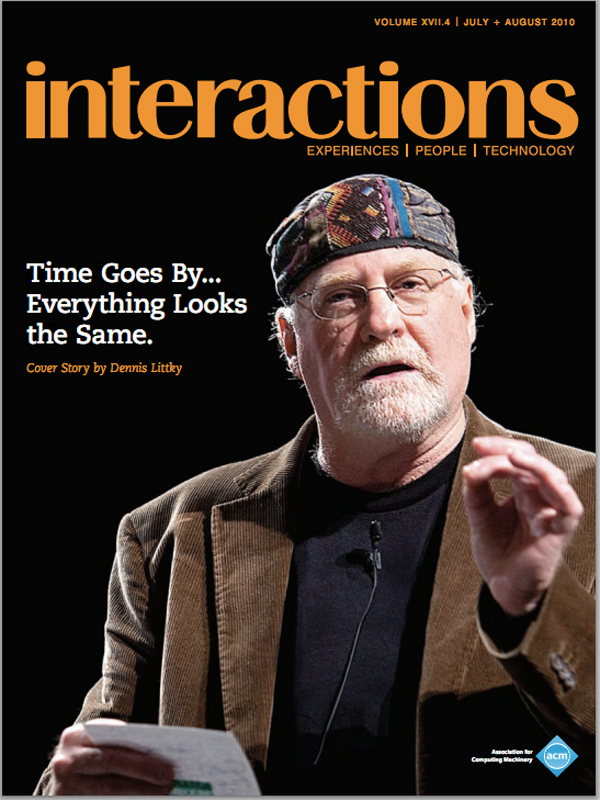Authors:
Katie Scott
In the words of Brenda Laurel, research makes design a "more muscular profession." [1] Design research provides the details that define the problem structure: whom a product is for, what purpose it serves, where it fits in a given context, when it is necessary, and why it is preferable. Formative contextual research provides the starting point for developing a solution. But design research is a messy domain, with data coming from all directions, in all forms, and in all levels of fidelity. The data derives from a wealth of different research methodsinterviews, ethnography, latent video capture, and participatory design…
You must be a member of SIGCHI, a subscriber to ACM's Digital Library, or an interactions subscriber to read the full text of this article.
GET ACCESS
Join ACM SIGCHIIn addition to all of the professional benefits of being a SIGCHI member, members get full access to interactions online content and receive the print version of the magazine bimonthly.
Subscribe to the ACM Digital Library
Get access to all interactions content online and the entire archive of ACM publications dating back to 1954. (Please check with your institution to see if it already has a subscription.)
Subscribe to interactions
Get full access to interactions online content and receive the print version of the magazine bimonthly.







Post Comment
No Comments Found